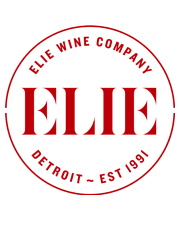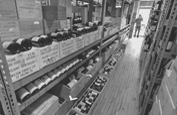The Champagne Society June 2022 Selection: Champagne Marguet
Champagne Marguet
Champagne Marguet ‘Yuman’ Premier Cru Blanc de Blancs 2018 ($58)
OR
Champagne Marguet ‘Shaman’ Grand Cru 2017 ($58)
Marguet’s Naturally Grown Champagne Channels His Biodynamic & Homeopathic Practices:
“A Vitality About The Fruit That Makes it Feel Truly Alive.
True disciples call it the future of wine, and even the naysayers are beginning to admit that after years of practicing biodynamics, the dividends are irrefutable. And nowhere in Champagne is this more evident than at Champagne Marguet, where Benoît Marguet is one of the few growers in the region to have thrown himself, body and soul, into homeopathy .
It’s easy to think of Champagne as a spiritual substance; after all, it was created by monks and the very airiness of its identity seems celestial. The cornerstone of biodynamics is a view of the vineyard, and its subsequent produce, as a singular organism capable of self-healing and self-propagation. Natural material alone sustains the soil; chemical fertilizers and pesticides are forbidden and range of animals creating a rich, fertile environment for the vines to thrive in. For Benoît Marguet, this goes beyond biodynamics as a concept; it’s a vision of complete harmony in every stage of winemaking and an improvement in his own personal life which translates into his Champagne.
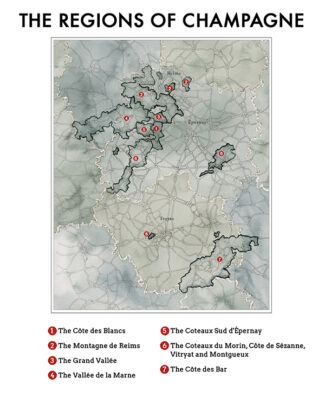
Exploring Pinot Noir Country: The Montagne de Reims
Forming a broad and undulating headland that covers five thousand acres of thicket and vineyard, the Montagne de Reims stretches 30 miles east to west and, north to south, is about five miles wide. The vines hug the limestone slopes of the western and northern flanks and are planted in a huge semicircle that extends from Louvois to Villers-Allerand.
This is Pinot Noir country (except in Trépail and Villers-Marmery, where the Chardonnay can be found). The most northerly of Champagne’s four demarcated regions, the Montagne de Reims is also the most well-known, with more Grand Cru sites than anywhere else in the AOP. Tectonics gave the region mountains of chalk, and the Romans added their two cents by leaving behind huge limestone pits known as Crayers. Within, the humidity remains at around 60% and temperatures at a steady 57°F; perfect cellaring conditions to soften the cold-climate acids of Champagne with time on lees. As a result, Louis Roederer, Ruinart, Veuve Clicquot, Krug, Taittinger and Mumm all store wine here.
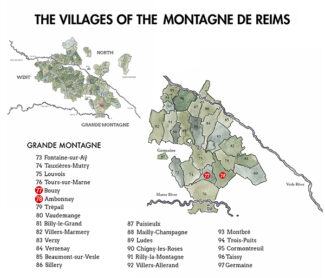
Grand Cru Bouzy and Grand Cru Ambonnay: Always Rivals
Like the Hatfields and the McCoys (without rebel flags and shotguns), Bouzy and Ambonnay have a longstanding rivalry built on begrudging respect and competitive moxie. At its closest point, the distance between the two communes is less than a long drive with a golf club, and each have shored up a reputation for superlative wines from the south side of the Montagne de Reims hill.
Yet connoisseurs will happily point out their favorite qualities in each, generally citing the special elegance of wines from Ambonnay, due in part to undulating, south-eastern exposures that moderate the ripening process.
In contrast, Bouzy exposures are almost entirely to the south, ideal for Pinot Noir. More than nine hundred acres in Bouzy are under vine, with 87% of them Pinot Noir, 12% Chardonnay and a scant 0.2% Meunier. The most prominent Champagne houses with a Bouzy presence are Bollinger, Duval-Leroy, Moët & Chandon, Mumm, Pol Roger and Taittinger.
Nearby Ambonnay shares a nearly identical terroir with Bouzy and is similarly appointed, although with slightly less Pinot Noir grown and a bit more Chardonnay—white grapes accounts for about 20% of the vineyards. Like Bouzy, ‘Ambonnay Rouge’ represents a small portion of wine production. Prominent Champagne houses that control Ambonnay vineyards include Duval Leroy, Moët & Chandon, Mumm, Piper Heidsieck, Pol Roger and Roederer.
Champagne Marguet
“We are not human beings having a spiritual experience. We are spiritual beings having a human experience.”
Pierre Teilhard de Chardin
Champagne Marguet has been a bellwether for innovation since 1883, the year that Émile Marguet began to graft his vines onto American rootstocks in the face of the impending invasion of phylloxera. Alas, so ridiculed was the notion throughout Champagne that Marguet wound up tearing out the grafted vines and promptly declared bankruptcy.
Ratchet forward a century and a half: In 2006, Émile Marguet’s distant scion Benoît Marguet joined forces with Hervé Jestin, the former chef de cave of Duval-Leroy, and began to produce a special homeopathic and biodynamic super-cuvée called ‘Sapience’, first released in 2013. Being on the cutting edge of trends has finally paid dividends. Today, Benoît farms 25 acres of vines, all using biodynamic practices. Most are owned by Marguet himself while the rest are leased from relatives. Among them are eight different lieux-dits with an average vine age of 42 years; each is bottled under the name of the plot and reflects the minute soil differences that exist throughout his holdings as well as the massale-select varieties he suits to his various terroirs—among them Les Crayères, Les Bermonts, Le Parc and Les Saints Rémys.
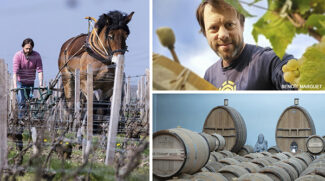
The Horses, The Vines and The Eggs
Two techniques keep Benoît Marguet close to his passion; first, since 2009, he has plowed his acres with a pair of draft horses. He argues that by using this method of cultivation roots are forced deeper towards the water table surface, providing a better water supply. In addition, he treats the soil with preparations made of essential oils, tisanes, nettles, citronella, lavender and rhubarb. “The well-being of the soil is a priority,” he points out. “The horse is in connection with the three elements of terroir, the mineral (chalk), the vegetal (vine and flora) and the animal (fauna and human interaction).”
Next, in the cellar, he continues to adhere to the principles of biodynamics by working the wine according to lunar cycles. Under the conviction that the shape of a vat can affect the quality of the wine, he installed special 40hl egg-shaped wooden cuvée casks produced to his specifications by Tonnellerie Taransaud. The unique shape provides a height/width ratio equal to the Golden Mean or Phi, which Benoît believes is a natural feature repeated throughout the physical world and encourages spiral convection currents and a harmony to better clarify the wine… and his own purpose.
“This symbiosis, with the principle of nature assisting nature, is fascinating research work for me, with influences from various cultures and countries,” Benoît maintains. “In my opinion these fundamental or elemental practices are solutions that instill within our wine its full health benefits, and perhaps even more…”
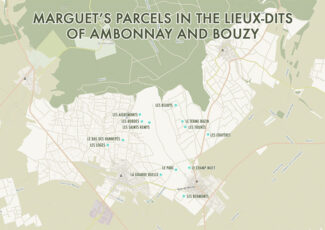
Due to the limited quantities of each cuvée members will be assigned one of the following two cuvées:
 Champagne Marguet ‘Shaman’, Grand Cru 2017 Brut Nature ($58)
Champagne Marguet ‘Shaman’, Grand Cru 2017 Brut Nature ($58)
67% Pinot Noir, 33% Chardonnay, bottled with no dosage and drawn entirely from Grand Cru parcels in Ambonnay in Bouzy. ‘Shaman’ is a suitably cosmic name for Biodynamic Benoît’s NV line-up, but it’s fairly recent: Formerly called ‘Elements’, there was a trademark conflict with California’s Artesa that drove the name change. The base wine comes from the abbreviated 2017 vintage, which saw rainfall in August that caused a hurry-up harvest to prevent botrytis. The nose is ripe with notes of cherry blossom, white peach and spice while the palate is broad and expansive with rich stone fruit and a firm, concentrated mineral core. (Disgorged January 2021, no dosage.)
*click on image for more info
OR
 Champagne Marguet ‘Yuman’, Premier Cru Blanc de Blancs 2018 Brut Nature ($58)
Champagne Marguet ‘Yuman’, Premier Cru Blanc de Blancs 2018 Brut Nature ($58)
100% Chardonnay from the Premier Cru village of Vrigny, located in the Petite Montagne de Reims—the northwestern part of the Montagne de Reims. Chardonnay makes this somewhat unusual for Vrigny, which is known primarily for Pinot Meunier, a variety that makes up 71% of the vineyard plantings. Bottled in July 2019, disgorged in February 2021 without dosage, the wine shows a beautifully pure, elegant and intensely mineral profile that is textbook Blanc de Blancs. No dosage.
*click on image for more info
Also available from Champagne Marguet …
 Champagne Marguet ‘Shaman’, Grand Cru Rosé 2017 Brut Nature ($58)
Champagne Marguet ‘Shaman’, Grand Cru Rosé 2017 Brut Nature ($58)
The base wine is from 2017, complemented by reserve wines from a solera established in 2010. 59% Chardonnay from Ambonnay and 41% Pinot Noir from both Ambonnay and Bouzy; Disgorged November, 2020 and labeled Extra Brut, although with 0g dosage, it is actually Brut Nature. Offers aromas of sweet berries, spices, orange and dried flowers with bright acids, a chalky structure and a pinpoint mousse, concluding with a saline finish. No dosage.
*click on image for more info
 Champagne Marguet ‘Sapience’, Premier Cru 2010 Brut Nature ($200)
Champagne Marguet ‘Sapience’, Premier Cru 2010 Brut Nature ($200)
A blend of 50% Chardonnay, 25% Meunier and 25% Pinot Noir, the wine is a cooperative effort between four top biodynamic growers, Benoît Marguet, Benoît Lahaye, Vincent Laval and David Leclapart: Leclapart provided the Chardonnay, Lahaye the Pinot Noir and Laval the Meunier, while the vinification was done in Marguet’s cellar. The base wine spends two years aging in barrels before the second fermentation in bottle. With the balance and effortlessness of the best grand marques and the depth of terroir of the best grower Champagnes, the wine provides a creamy nose with hints of dried fruit; warm nut-bread flavors on the palate that are in absolute harmony with the wine’s vibrant minerality. (Disgorged January 2020, no dosage.)
*click on image for more info
Coteaux Champenois: Still Champagne
To some, the idea of a still Champagne is like a vegan who eats meat, but the truth is, with global warming infiltrating the world’s vineyards, cold regions like Champagne are increasingly able to produce wonderful wines minus la mousse. Spread across 319 communes, the AOP ‘Coteaux Champenois’ signifies dry, still wine from Champagne; they may be red, white or rosé from virtually the same footprint that produces sparkling Champagne. The majority of Coteaux vineyards are planted in a temperate maritime climate with slight continental influences, particularly in the southeast. Like sparkling Champagne, seven grapes are permitted in the Coteaux. Beside the familiar trio (Chardonnay, Pinot Noir and Pinot Meunier), also allowed are historical varieties Arbane, Petit Meslier and the Pinot derivatives, Pinot Blanc and Pinot Gris.
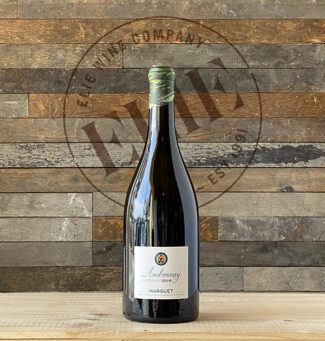 Marguet, Coteaux Champenois Grand Cru Ambonnay Blanc 2018, ($100)
Marguet, Coteaux Champenois Grand Cru Ambonnay Blanc 2018, ($100)
100% Chardonnay, 100% Grand Cru from lieux-dits Le Parc and Les Crayères (planted in 1970). The nose is effusively floral with aromas of apple blossom and white peach, echoed on the palate with bee’s-wax and orange, with an intense chalkiness at its core. Aged in oak for 18 months prior to bottling; about 800 bottles made in total.
*click on image for more info
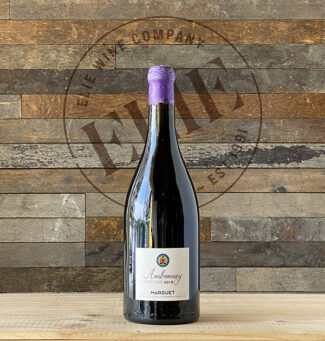 Marguet, Coteaux Champenois Grand Cru Ambonnay Rouge 2018, ($100)
Marguet, Coteaux Champenois Grand Cru Ambonnay Rouge 2018, ($100)
Pinot Noir requires more hang-time on the vine to fully ripen, and Marguet only produces red Coteaux Champenois in exceptionally warm years; 2018 was one of them. Les Saint Rémys is a parcel of 100% Pinot Noir located on the west side of Ambonnay near the border of Bouzy and produces a lightly-toned red wine with plum, raspberry and sloe on the nose followed by a silky, fruit-driven palate with the tug of stony minerality.
*click on image for more info
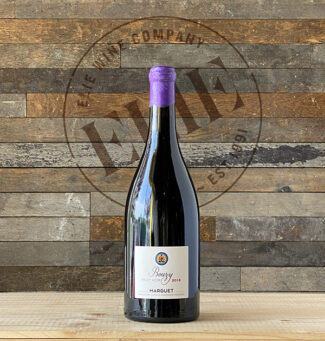 Marguet, Coteaux Champenois Grand Cru Bouzy Rouge 2018, ($100)
Marguet, Coteaux Champenois Grand Cru Bouzy Rouge 2018, ($100)
Thanks to south-facing slopes, Bouzy is one of a few Champagne villages with a strong tradition of red wines. Among the many lieux-dits, Les Loges is a Grand Cru site just below the middle of the slope to the northwest of the village, and this is the vineyard from which Marguet draws his fruit. The wine shows clean dark-cherry and blackberry with a noted spiciness on palate and substantial but ripe tannins. 553 bottles made in total
*click on image for more info
A note …
Grower Champagne and Boutique Négociant House
First, perspective is important: In Champagne there are approximately 16,000 growers, 140 cooperatives and 320 classic Champagne houses—the latter (the most familiar names in Champagne), own only 10% of the land. Growers, therefore, control 90% of the 85,000 acres of vineyard in Champagne. Even so, most of their holdings are tiny: the average grower owns fewer than 10 acres while only about 5000 of them make their own wine.
The devil is in the details, but on Champagne labels, generally below the ABV, such details indicate the name of professional category responsible for the bottling; look for two letters which are followed by a registration number issued by the Comité Champagne. There are six used, but the most useful to know are ‘RM’ and ‘NM.’
RM stands for Récoltant-Manipulant, and announces a winemaker who cultivates, harvests, vinifies and sells his or her own Champagne. There are more than 2000 Récoltants-Manipulant in Champagne, and the result is a wine, with its particular character and personality, reflecting the particular winemaker’s choices and vision.
NM means Négociant-Manipulant and signifies a person (or legal entity) that purchases grapes, grape must or wine to make Champagne on premise and market it under its own label. All of the big Champagne Houses can be found in this category.
Although it doesn’t yet warrant its own abbreviation, boutique Négociant House are indeed a growing subcategory and may be understood to be a kind of hybrid; small, independent growers, previously held strictly to their own land holdings who are now also using fruit from friends and family to supply grapes to satisfy growing demand for their Champagne. Marguet is one such ‘house.’
- - -
Posted on 2022.06.04 in France, The Champagne Society | Read more...
Quaffable Holiday Dozen. The Hedonistic Wines of The Southern Rhône’s Six Mighty Crus: Hunting Ground for Bounty (4 Reds & 2 Rosés in 12-Bottle Pack $299) + A Dozen of Reds for $150
‘More bang for the buck’ or ‘more bounce to the ounce’? —choose your idiom and see how well it applies in Southern Rhône. Two factors contribute to the ocean of wild, hedonistic and affordable wines from the ground floor of French winemaking: A hot, dry Mediterranean climate that allows most grapes to fully ripen in most vintages and the generosity of the mainstay grape variety, Grenache. Given a judicious watch on acid levels, the ability of Grenache to produce big, balanced wines in copious quantities keeps prices down and makes it a quintessential quaffing wine, as perfect for a summer barbecue as it is for a hearty winter stew.
The four Southern Rhône red wines offered in this week’s package represent all the above—they are paradigms of unabashedly forward fruit that avoids becoming jammy; they are fleshy and ripe, well-structured and filled with spicy, savory undertones.
The two rosés added as a paean to springtime represent the typically Rhône-ish style of pink, richly-flavored, bone dry and somewhat darker in hue than the saccharine blush of California.
Looking Beyond Châteauneuf-du-Pape For Outstanding Southern Rhône
In Southern Rhône, Châteauneuf-du-Pape lords over the imagination. Like the Pope’s castle from which it draws its name, CdP sits atop Rhône grand pyramid—a rarified position shared (in part) by the very few villages entitled to use their own name on the label. Among these are Gigondas, Tavel, Rasteau, Cairanne, Vacqueyras, Lirac, Beaumes de Venise and Vinsobres. It is within these other bottles—the ones without the embossed papal coat of arms and St. Peter’s crossed keys—that the biggest quality bargains in Southern Rhône wine may be found.
During the 1980s (and continuing to this day), many producers in Southern Rhône found that the demand for excellent wine coupled with increasing New World competition forced a rethink of their methods. As a high yielding grape, Grenache, along with Syrah, is responsible for much of the simple bulk wines from Southern Rhône and nearby Languedoc. But to legal comply with a Cru’s exacting stipulations, yields have to be reined in. Cru is a French word meaning ‘growth’ but refers to a legally demarcated region that’s recognized for its quality and distinctive terroir. You can’t physically change your terroir, but you can streamline its expression by producing limited quantities of wine using a better selection of grapes and by using of mandated quality measures.
These ambitious improvements have supercharged the region’s sense of re-discovery, but it’s fair to say that not domains have made identical strides at the same pace. That said, the following terroirs and winemakers win our highest praise—they are wines that display phenomenal detail, rich complexity and unique personality while offering unequalled value, especially pitted against the ever-escalating price tags for Châteauneuf-du-Pape.
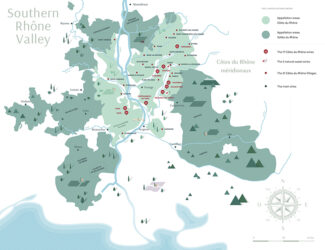
This holiday 12-bottle package is comprised of two of each of the following six wines:
Cru Gigondas: Domaine Saint Damien
In 1971, Gigondas was the first of the Côtes du Rhône Villages appellations to be elevated to Cru status. Once referred to as ‘the poor man’s Châteauneuf-du-Pape’, the fact is, Gigondas wines have improved so much that in modern times that it has become increasingly difficult to differentiate the best of Gigondas from its glossier embossed cousin. Gigondas vineyards are found along the base and slopes of the first Dentelles de Montmirail foothills, where the combination of limestone soils on the Montmirail slopes to the east, and rocky, sandy, free-draining soils on the flatter, lower-lying land to the north and west.
Spreading over 112 acres in Gigondas, Plan de Dieu and Côtes-du-Rhône Villages, Domaine Saint Damien is the brainchild of Joël Saurel and his son Romain who have lifted the estate—named for the patron saint of doctors—from humble roots to becoming one of the most reputable domains in Gigondas.
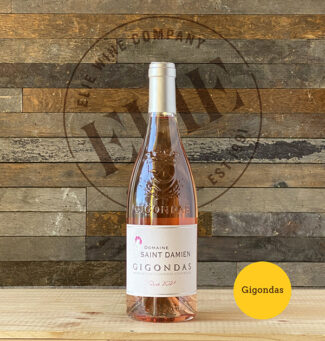 Gigondas Rosé 2021, Domaine Saint Damien ($28)
Gigondas Rosé 2021, Domaine Saint Damien ($28)
70% Cinsault, 15% Syrah, 15% Mourvèdre from vines grown in red clay dominated by ‘cailloux’ stones, all between 15 and 45 years old. The wine shows lovely sun-ripened strawberries, raspberries and loganberries along with a sweet touch of red jam. Garrigue notes develop in the glass while the fruit intensity joins the acids and powdery tannins for a luscious ride.
Cru Tavel: Château de Manissy
Tavel and rosé are inseparable terms; not only did Tavel become the first French rosé appellation in 1937, it remains the only appellation in the Rhône dedicated exclusive to producing rosé. The characteristic luminosity and complexity of Tavel rosé is in part due to the blend of allowable grapes—nine varieties, none of which makes up more than 60% of the varieties grown. Unlike much of Southern Rhône, where Grenache gets top billing, Tavel wines usually contain about half Grenache, relying on Syrah for its intense, fresh-fruit aromas, Mourvèdre for color, Carignan for tannin and Clairette—a white grape—for flowery elegance.
Located on the bank of the Rhône River opposite to Châteauneuf-du-Pape, Tavel represents a triumvirate of terroirs: The lowest portion sits on sandy soils with very little organic matter and produces aromatic, low-alcohol wines; Lauses—a type of shallow soil covered with stone tiles mixed with red clay on a limestone bedrock—results in wines of great finesse and pronounced minerality; finally, Les Vestides, where the soil is blanketed with limestone rocks and roots run deeply, produces robust, structured wines slightly higher in alcohol.
Château de Manissy was built in the middle of the 18th century by the Congregation of Missionary Fathers of the Holy Family who planted the first vines in 1916. Having developed a loyal following for their Tête de Cuvée, the priests turned over the managing of the estate to Florian André in 2004. Among the many improvements he brought to the site was a switch to minimal interference agriculture and in 2012, he certified organic and began producing some exceptional wines from the limestone and clay soils.
 Tavel Rosé 2021, Château de Manissy ‘Cuvée des Lys’ ($16)
Tavel Rosé 2021, Château de Manissy ‘Cuvée des Lys’ ($16)
55% Grenache, 15% Syrah, 15% Clairette and 15% Cinsault, the wine shows lush summer fruit, candied raspberries and watermelon behind the flinty core. Weighty and rounded, supple, with crisp acidity and the tang of minerality.
Cru Rasteau: Domaine de Beaurenard
“Rasteau is a powerful wine,” says Helen Durand of Domaine du Trapadis. “Power and freshness aren’t opposites here. Even if acidity is soft, there is freshness from minerality and finesse, particularly with age.”
Long considered one of the best of the Côtes du Rhône Villages, the appellation obtained Cru status for dry red wines in 2010—previously, it had been heralded for its fortified sweet wine, Vin Doux Naturel. The climate is typical of Southern Rhône except that the south-facing hillsides provide protection from the cool Mistral winds; the soils are relatively diverse, though it is the higher proportion of clay which gives the red wines their distinctive body and richness.
A family-run estate for eight generations, brothers Daniel & Frédéric Coulon and Daniel’s sons Victor and Antonin carry forward Domaine de Beaurenard’s torch amid a mosaic of limestone, round pebbles on a clay substrate with varying amounts of iron and fine sedimentary sand. The brothers are nearly as well known for their cultivar conservatory as for their wine: Says Daniel, “Our primary goal was to safeguard the natural genetic heritage that is particularly well adapted to the terroir. But we were also mindful of future generations, and if global warming continues, to increase the proportion of varieties that contain less sugar and contribute aromatic complexity.”
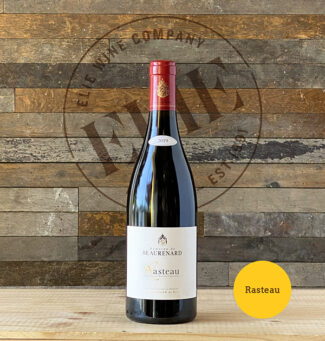 Rasteau Red 2019, Domaine de Beaurenard ($33)
Rasteau Red 2019, Domaine de Beaurenard ($33)
80% Grenache, 17% Syrah and 3% Mourvèdre from Beaurenard’s sixty acres in Rasteau, the wine displays an array of floral scents in the nose with garrigue and wild blackberry notes. Fruity and spicy on the palate with wild raspberry, rosemary and thyme with an appealing tannic structure.
Cru Vacqueyras: Domaine La Garrigue
Adjacent to Gigondas, nestling at the foot of the Dentelles de Montmirail and extending beyond the commune of Vacqueyras to Sarrians, Cru Vacqueyras was once known for the rustic quality of its wine. In recent years, however, producers have sought—and obtained—elegance to offset the brambles. The vineyards of Vacqueyras are generally found at lower elevations where it is warmer than their neighbors’ hillside sites. Many of the vines are planted in the Garrigues, or flatlands, which are covered with galets roulés, although there are a few higher-elevation vines found on the region’s sandy slopes and stony terraces. “Compared to Gigondas, Vacqueyras has always been the more accessible and eager wine,” says Jean François Arnoux of Arnoux & Fils. “It offers more fruit, warmth and spice, and it doesn’t hurt that the price is typically 20% less.”
In the world of wine, longevity is the consummation devoutly to be wished; it means staying power, both on the palate and in the field. Domaine La Garrigue was founded in 1850 by the same family that runs the property today. Brothers Maxime and Pierre Bernard are at the helm, with wives, children, nieces and nephews all at work, and there is plenty to be done: At over two hundred acres, it is the largest domain in Vacqueyras. There are three terroirs in Vacqueyras, and La Garrigue has plots in each of them, aware of what each brings to the party. Red-clay-under-galets plateau of La Garrigue (not coincidentally, where Domaine la Garrigue is located) offers power and depth, the sandy soils around the village of Vacqueyras bring finesse and the rocky limestone slopes at the foot of the Dentelles de Montmirail mean structure.
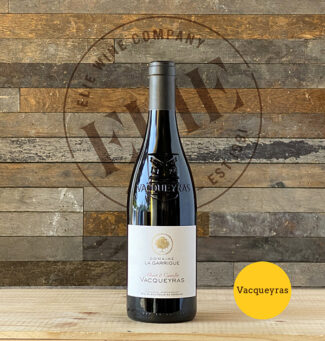 Vacqueyras Red 2019, Domaine La Garrigue ‘Albert & Camille’ ($26)
Vacqueyras Red 2019, Domaine La Garrigue ‘Albert & Camille’ ($26)
Only a thousand cases of this rich red wine were made; it is a blend of 80% Grenache with the balance being made up of Syrah and Mourvèdre from 70-year-old vines grown at an average elevation of five hundred feet. Wild raspberries and plush red plums dominate an otherwise brambly palate filled with intriguing hints of truffle, olive, peppery herb and ribbon-smooth tannins.
Cru Lirac: Domaine Maby
To say that the wines of Lirac are lyrical is not just a pun; the noted combination of elegant perfume and savory grace softens the might. Lirac’s reds are similar in style to the softest of the Côtes du Rhône Villages but miles ahead in complexity. 85% of Lirac production is red, with rosés accounting for 5% and whites the remaining 10%.
Lirac’s two thousand acres are directly across the Rhône from Châteauneuf-du-Pape, and the appellation shares the same iconic galets roulés, sand and limestone soils. Vineyards on Lirac’s upper terraces are generally made of red clay and large pebbles known as ‘terrasses villafranchiennes’; the soil of the lower vineyards shows more loess and clay-limestone. All elevations are prone to summer drought and, under certain strictures, irrigation is allowed. “The terroir of Lirac is often hidden in the shadows of Châteauneuf-du-Pape,” says Laure Poisson of Les Vignerons de Tavel & Lirac. “But in recent years, Lirac has emerged from the shadows to become something different, something unique.”
There’s no ambiguity at Domaine Maby—the Maby family has been tilling these soils for 70 years. Nestling in pastoral beauty near Avignon, the family’s first vines were in the lieu-dit Clos du Palai. In the 1960s Roger Maby snaked the holdings into the magnificent pebbled terroir of Lirac, and in 2005, Roger’s son Richard Maby—who’d spent the previous fifteen years in finance—joined the team. He recognized the potential of Lirac and Tavel and is credited with bringing new energy and a modern style to the wines.
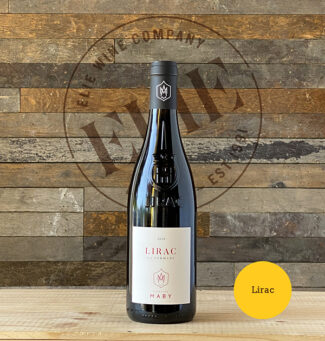 Lirac Red 2018, Domaine Maby ‘La Fermade’ ($21)
Lirac Red 2018, Domaine Maby ‘La Fermade’ ($21)
55% Grenache, 25% Syrah and 25% Mourvèdre, with the remaining five percent a field blend. ‘La Fermade’ refers to a previously-wooded plot that was cleared and replanted with Grenache, Mourvèdre, Syrah and Picpoul in the 1970s; those vines are now fully mature and produce low yields of intense fruit with balancing acidity. The wine shows a rich nose of baking spice and blackberry syrup; on the palate there is cassis, black cherry, garrigue and an undercurrent of wet stone.
Cru Cairanne: Domaine Alary
One of the Rhône’s newest and most promising appellations, Cairanne earned its Cru colors in 2016. Located just east of the historically significant city of Orange, Cairanne’s soils are predominantly made of limestone and alluvia, the latter explained by the presence of several local rivers and streams, especially the Aigues. Red, iron-rich earth over sandstone bedrocks may be also found throughout Cairanne, while topography ranges from the glacial plateau to the south of the town to the slopes of the Dentelles de Montmirail foothills to the north and west. Although 60% of the wine is the standard Grenache, Syrah and Mourvèdre blend, Syrah prefers the cooler parts of Cairanne’s mesoclimates, and in 12% of Cairanne’s blends, Syrah is the dominant varietal with Mourvèdre as the only other grape in the cépage.
Denis Alary of Domaine Alary considers himself a perfectionist as well as a grand idealist; his seventy acres of vineyard, entirely in Cairanne, is where he goes to relieve the stress that accompanies the loftiness of his ambitions. “Alone,” he says: “Without a cell phone.” As he took over the estate from his father Daniel, the oenologist is now passing responsibility to his son Jean-Etienne who brings an international reputation to this dry, dusty corner of France, having vinified at New Zealand’s Seresin, Australia’s Henschke and in France at Confuron-Cotetidot in Burgundy.
 Cairanne Red 2019, Domaine Alary ‘L’Estévenas’ ($26)
Cairanne Red 2019, Domaine Alary ‘L’Estévenas’ ($26)
A 50-50 blend of Grenache and Syrah that contains one of the oldest parcels of Syrah planted in the Southern Rhône, Alary’s flagship wine delivers as expected; a focused nose with aromas of red berry, licorice and wild herbs. Inky and layered on the palate with loads of luscious black fruit alongside notes of cracked pepper, Kalamata olive and rich leather.
Buy a Dozen for $150 (Limited)
‘Cave de Cairanne’: A Grower-Owned Cooperative
In France, a wine cooperative is strength in numbers; they consist of like-minded growers and winemakers who join forces to buy grapes in bulk and vinify according to the specifics of each region from which they purchase. Thus, they serve as market regulators, due in part to the substantial volumes they handle and large storage capacities.
The Cave de Cairanne is one such endeavor. Grower-owned, it was formed in 1929 and today consists of 65 vignerons working 1300 acres in Côtes du Rhône, Côtes du Rhône Villages, Villages Plan de Dieu, Cru Cairanne and Cru Rasteau. Camille Cayran, one of the three founders, described the cooperative’s mission and pioneering philosophy in these terms: “Knowing how to understand and perpetrate the traditions handed down to us by the founding fathers of our region is the mindset of a winemaker who is also the gardener of his treasure. Deeply rooted in our history, it is also a question of respecting men all the way down the creating process from the vine to the glass. It is a veritable human adventure.”
 Cave de Cairanne ‘Chantecôtes – Les Terres Vierges’ Côtes du Rhône Red 2019
Cave de Cairanne ‘Chantecôtes – Les Terres Vierges’ Côtes du Rhône Red 2019
(12 Bottles Pack for $150)
Sainte Cécile Les Vignes, two years older than Cave de Cairanne, merged with that cooperative in 2020, believing that they could provide Cairanne with additional volume while upping the ante on their own quality level. “With this merger, we are giving ourselves the means to make the best possible wines, through better management of maturities, later harvests, stricter plot selections,” said Denis Guthmüller, president of Cécilia-Chantecôtes.
A balanced blend of Grenache, Syrah, Mourvèdre and Carignan, ‘Les Terres Vierges’ (The Virgin Lands) is rich crimson in color showing blackberry liqueur, ripe pie cherry, smoked meat and hints of underbrush.
- - -
Posted on 2022.05.26 in Châteauneuf-du-Pape, Gigondas, Tavel, Rasteau, Vacqueyras, Lirac, Cairanne, France, Wine-Aid Packages, Southern Rhone | Read more...
Fans of Grenache Are Going to Be Thrilled with 2019 Châteauneuf-du-Pape! How Did the Vintage Turn Out So Well? (7-Bottle Pack $398) – Twelve Producers & 19 Wines
Like a great character actor in film—the bit player you recognize but can’t name—Grenache is everywhere and nowhere at once; it makes an appearance, leaves an indelible impression, then moves on. Grenache is the Paul Giamatti of grapes.
A vigorous vine, the wood of a Grenache trunk is so hardy that the varietal often grows as a bush, without the need for trellising. Likewise, irrigation is largely unnecessary, since the Grenache vines that produce the best wine grapes are under slight water stress. Capable of an exquisite reflection of terroir when yields are restricted, Grenache displays its most profound characteristics when grown in poor soils, frequently dominated by schist and sand to provide adequate drainage. In the cellar, fermentation at low temperatures is important for retaining freshness; maceration for color and tannin takes place during the early stages of fermentation, but is usually stopped before the wine becomes too tannic. New oak must be used judiciously so as not to overpower the rich fruit that is beloved by the variety’s fans, in part due to the extraordinary ripeness levels that Grenache is capable of reaching in warm climates.
Once the most widely planted red wine grape on earth, many Grenache vines were uprooted in recent years—part of the European government’s effort to decrease the amount of inexpensive wine made from unchecked, high-yielding vines. In Spain and Southern Australia, it is enjoying a renaissance, while in France, Grenache remains one of the most important red wine grapes of the Languedoc. Grenache/Syrah/Mourvèdre is still regarded as the holy trinity in southern Rhône’s best red wines: Châteauneuf-du-Pape, Gigondas, Vacqueyras, Lirac and Tavel.
How Did the 2019 Vintage Turn Out So Well?
Unlike the previous two growing seasons, 2019 came in like a lamb and left behind a lion’s share of superb Châteauneuf-du-Pape. Moderate temperatures throughout the winter and no killing frosts in the early spring ensured an abundant fruit set. Three heat waves followed, each interspersed with rain and more moderate temperatures, and as a result, there was no drought stress for the vines, and ripening never shut down for a significant period.
Harvest was prolonged and allowed growers to pick at what they felt was the optimum ripeness. As difficult as 2017 and 2018 had been, 2019 was a dream vintage; virtually nothing had to be done in the vineyard. The health of the harvest carried through to the cellar, with many growers reporting that their vinification, mostly done on indigenous yeast, was fast and efficient. The only challenge, as it happens, was tannin management, but for Grenache in particular, 2019 was an ideal vintage.

Châteauneuf-du-Pape:
A Peak Expression of the Southern Rhône
The best, and by most accounts, the most reliable of the many Southern Rhône labels is the insignia-embossed Châteauneuf-du-Pape, which hails from a remarkable region between the towns of Orange and Avignon. Named for the castle built by the 14th Century Pope John XXII, this heavily-extracted wine is the template after which most Côtes du Rhône reds model themselves. In fact, it’s these copycats that persuaded the producers of genuine Châteauneuf-du-Pape producers to apply to the French government to protect their name, making it the first AOP in France.
The unique combination of precipitation (Châteauneuf-du-Pape is very dry) and wind (the powerful mistral blows in from the Gulf of Lion in the northern Mediterranean) and especially, the large, flat stones known as galets roulés which serve to prevent surface evaporation and reflect sunlight into the canopy, is the appellation’s secret. This happens to be conditions ideal for Grenache to realize full potential, and as a result, Châteauneuf-du-Pape is largely built around this grape. Syrah adds black-fruit spice, and is grown on cooler higher ground; Mourvèdre brings flesh and acidity, and makes up about 10% of a typical blend. To a decreasing extent, Cinsault is used for aromatics; a total of 13 varietals are permitted, giving the wine a legendary and almost unrivaled complexity.
Taste and Character
Big-shouldered and occasionally blustery, Châteauneuf-du-Pape wine may, in ideal vintages as in 2019, be as enjoyable to drink in its youth as it is with age. When young, a core of perfumed fruit tames the tannins and acidity, and tempers into rich leather and smoky, earth-tones as it grows older.

Untrained Old Vines Grenache Bush in Galets Roulés
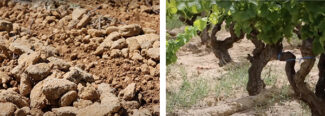
Grès Rouge, Sand and Safre
Terroir and Soil
Châteauneuf-du-Pape terroir has origins 60 million years ago, when a shallow primeval sea flooded the Rhône Valley. As it receded, it left behind ‘safre’ (an aggregate of sandy sediment) and banks of clay and limestone. Four ice ages punctuated by warm interglacial period accounts for the terraces visible in Châteauneuf-du-Pape as well as the heterogeneous soil. In general, soils in the rocky, western sectors of Châteauneuf-du-Pape are formed of limestone, while sand and clay soils covered with large stones dominate the plateaus. Mixed sand, red and grey clay and limestone can be found in the northern part of the appellation and less stony soil alternating with marl in the east, while shallow sand and clay soil on a well-drained layer of gravel dominate the south.
Weather and Climate
Located within the Vaucluse department, Châteauneuf-du-Pape has a Mediterranean climate—the type found throughout much of France’s south—and characterized by hot, dry summers and cool, wet winters. It rarely snows at sea level (as opposed to the surrounding mountains, where snowfall may be considerable.)
As the equal of elevation and rainfall, a third defining feature of the climate in Southern France is the wind. In a land dominated by hills and valleys, it is always windy—so much so that in Provence, there are names for 32 individual winds that blow at various times of year, and from a multitude of directions. The easterly levant brings humidity from the Mediterranean while the southerly marin is a wet and cloudy wind from the Gulf. The mistral winds are the fiercest of all and may bring wind speeds exceeding 60 mph. This phenomenon, blowing in from the northeast, dries the air and disperses the clouds, eliminating viruses and excessive water after a rainfall, which prevents fungal diseases.

Vineyard Management and Grapes
In 1936, the Institut National des Appellations l’Origine officially created the Châteauneuf-du-Pape appellation, with laws and rules that growers and vignerons were required to follow. It was agreed that the appellation would be created based primarily on terroir (and to a lesser extent, on geography) and includes vines planted in Châteauneuf-du-Pape and some areas of Orange, Courthézon, Sorgues and Bédarrides. 15 grape varieties are allowed in the appellation: Grenache, Syrah, Mourvèdre, Terret Noir, Counoise, Muscardin, Vaccarèse, Picardan, Cinsault, Clairette, Roussanne, Bourboulenc, Red Picpoul, White Grenache and White Picpoul. Vine density must not be less than 2,500 vines per hectare and cannot exceed 3,000 vines per hectare. Vines must be at least 4 years of age to be included in the wine. Machine harvesting is not allowed in Châteauneuf-du-Pape, so all growers must harvest 100% of their fruit by hand.
Beyond that, vines are allowed to be irrigated no more than twice a year. However, irrigation is only allowed when a vintage is clearly suffering due to a severe drought. If a property wishes to irrigate due to drought, they must apply for permission from the INAO, and any watering must take place before August 15.
Traditional and Modern Styles
Throughout much of its history, CdP provided a leathery foil to the potent and somewhat austere elegance of Bordeaux and the heady sensuousness of Burgundy. CdP is ‘southern wine’, filled with rustic complexity—brawny, earthy and beautiful. But as a business, all wine finds itself beholden to trends, since moving product is necessary to remain afloat. During the Dark Ages (roughly1990 through 2010—in part influenced by the preferences of powerful critic Robert Parker Jr.) much of Châteauneuf-du-Pape’s output became bandwagon wines, jammy and alcoholic, lacking structure and tannin, in the process becoming more polished than rustic and more lush than nuanced. For some, this was delightful; for others, it was a betrayal of heritage and terroir.
These days, a new generation of winemakers seem to have identified the problem and corrected it. Recent vintages—2019 in particular—have seen the re-emergence of the classic, balanced style Châteauneuf-du-Pape, albeit at slightly higher prices. A changing climate has also altered traditional blends, so that more Mourvèdre may be found in cuvées that were once nearly all Grenache. Mourvèdre tends to have less sugar and so, produces wine that is less alcoholic and jammy, adding back some of the herbal qualities once so highly prized in the appellation. But a return to old school technique has also helped; many of the wines in this package were not destemmed prior to crushing and most were fermented on native yeast rather than cultured yeast.

This week’s package is comprised of one of each of the following seven wines for $398. The rest of the wines on the list are offered at special prices for your consideration to add to package purchase, or buy separately.
Domaine Giraud
The estate may be considered the love-child of Pierre and Mireille Giraud, the union of two venerable wine families. Pierre Giraud can trace his winemaking roots back six centuries while Mireille Buou’s family owned a village distillery for several generations. In 1974, the couple began to cultivate ten acres as sharecroppers, and over the course of a dozen years, acquired local land. In 1981, they transformed the Buou distillery into a winemaking operation, and first released a bottling under the name Domaine Giraud.
Among their plots, Pierre and Mireille inherited twenty acres of century-old vines located on the plateau of La Crau, Les Galimardes and on the sandy soils of the Pignan area near the Le Rayas district. In 1998, the couple turned the everyday administration of the domain to their children, Marie and François, both with degrees in viticulture and oenology. The work of plot selection as well as a transition to organic farming is now tasked to the new generation.
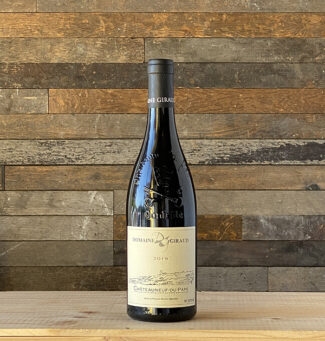 Domaine Giraud ‘Tradition’, Châteauneuf-du-Pape 2019 ($55)
Domaine Giraud ‘Tradition’, Châteauneuf-du-Pape 2019 ($55)
Red from red: Grenache, Syrah, Mourvèdre grown among the galets in the red clay soils of southern Châteauneuf-du-Pape. The vines, from the Bois de la Ville, la Cerise, les Galimardes, le Tresquoys and Valori lieux-dits, are between 60 and 85 years old, each certified organic. The blend is nearly 60% Grenache followed by Syrah and small amount of Mourvèdre fermented separately; the Syrah in French oak barrels with the Mourvèdre and Grenache in stainless steel and concrete. The wine shows cherry liqueur and lavender flavors with Provençal herbs, licorice, and loamy earth. The tannins are polished and the finish long and complex.
Domaine Charvin
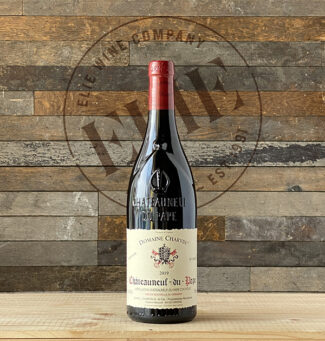 Established in 1851, Domaine Charvin is currently owned and operated by Laurent, the sixth-generation Charvin to run the domain but the first to commercially market a proprietary bottling. His meticulous attention to detail sees his harvest entirely hand-picked and sorted and bottled without filtration. Charvin produces only a single cuvée of Châteauneuf-du-Pape, which is consistently rated highly; it’s drawn from a 20-acre plot composed of vines whose average age is over fifty years, mostly planted on sandy, north-facing slopes.
Established in 1851, Domaine Charvin is currently owned and operated by Laurent, the sixth-generation Charvin to run the domain but the first to commercially market a proprietary bottling. His meticulous attention to detail sees his harvest entirely hand-picked and sorted and bottled without filtration. Charvin produces only a single cuvée of Châteauneuf-du-Pape, which is consistently rated highly; it’s drawn from a 20-acre plot composed of vines whose average age is over fifty years, mostly planted on sandy, north-facing slopes.
Domaine de Ferrand
Philippe Bravay is one of CdP’s most vocal cheerleaders and walks the walk just as well. From his 18-acre property, spread over six parcels in four lieux-dits, he draws half his juice from vines over 45 years old and the other half from vines that have hit the century mark. He is dedicated not only to Southern Rhône, but to organic farming and limited yields—his Côtes-du-Rhône harvests 2.5 tons per acre and his Châteauneuf-du-Pape even less. His vinification philosophy is the same for all his wines: “I do not use barriques because I want the wine of my vines and not a technical élevage which loses the origins of the wine. There is no filtration, only one fining for each wine. During the aging, the wine is neither racked nor blended, which is done only at the time of bottling and without the addition of preservatives.”
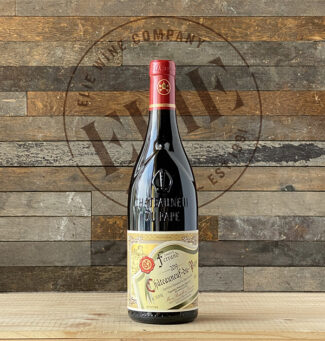 Domaine de Ferrand, Châteauneuf-du-Pape 2019 ($61)
Domaine de Ferrand, Châteauneuf-du-Pape 2019 ($61)
90% Grenache, 8% Syrah and 2% Mourvèdre from vines whose age averages 75 years. Lieux-dits that contribute to this wine include La Gardiole and Cabrières vineyards and notably, La Guariguette and Les Jaumes, which were planted in 1904, 1910 and 1920. The wine is concentrated but light on its feet with notes of violet, Asian spices, Bing cherry and smoke behind moderate acidity and ripe tannins—in short, it displays all the richness of the 2019 vintage.
Clos Saint Jean
An example of the oldest and the newest in CdP—the cellar originated in 1900, 23 years before the AOP of Châteauneuf-du-Pape was created, yet current owners Vincent and Pascal Maurel are considered prime proponents of the ‘modern style’ of winemaking in Châteauneuf. Clos Saint-Jean is a hundred-acre estate, with 60% of the vineyards located on iconic plateau of La Crau, primarily in the lieux-dits of Côteau de Saint-Jean and Cabane de Saint-Jean, where iron-rich red clays are topped with galets. Another 40% are located in alluvial clay and sandy soils adjacent to the plateau. They also own a small parcel of Mourvèdre in the lieu-dit of Bois-Dauphin near Château Rayas planted on sandy, limestone-rich soils.
The Maurels are dedicated to sustainable agriculture, a philosophy made easier in Châteauneuf since the warm, dry climate prevents the need for chemical applications. For pest control, they use natural pheromones, vines, a process called in French ‘confusion sexuelle’ (!)
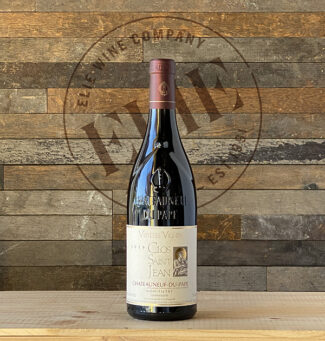 Clos Saint Jean ‘Vieilles Vignes’, Châteauneuf-du-Pape 2019 ($55)
Clos Saint Jean ‘Vieilles Vignes’, Châteauneuf-du-Pape 2019 ($55)
A bigger, badder version of the classic cuvée (Grenache, Syrah, Mourvèdre, Cinsault, Vaccarèse and Muscardin) with darker fruits and more pronounced notes of chocolate and spices behind the intoxicating scents of ripe plums, kirsch and licorice.
Domaine Saint Préfert
Isabel Ferrando is the force behind Saint Préfert and one of the most respected winemakers in France; her reputation has grown every vintage since her first release in 2003. From the 55-acre estate in the south of CdP, she produces five cuvées, two whites and three reds. The vines are old, but her team is young and she is always open to new ideas; she relies on tradition without being trapped by it. For example, she has taken to Stockinger as a supplier of oak for maturation, claiming that the Austrian cooperage results in more tension in the wines. In the 2009 vintage, Ferrando started working with whole-cluster fermentation without added yeasts, and discovered that this magnified freshness in the wines. “In ten years,” she maintains, “I’ve progressed. My sensitivity to the terroir is much more pronounced.”
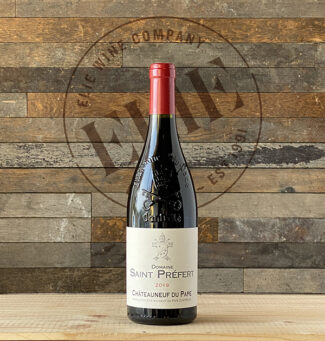 Domaine Saint Préfert ‘Classique’, Châteauneuf-du-Pape 2019 ($52)
Domaine Saint Préfert ‘Classique’, Châteauneuf-du-Pape 2019 ($52)
85% Grenache and 5% each of Syrah, Mourvèdre, and Cinsault. Vinified from middle-aged vines -30 years, tops- and aged entirely in concrete tanks; a beautifully perfumed and nuanced wine with classic notes of strawberries, cherries, loam and dried flowers; polished, elegant and silky on the palate.
Domaine Raymond Usseglio
Domaine Raymond Usseglio should not be confused with Domaine Pierre Usseglio, owned by his brother as a continuation of the winery founded by their father Francis. Raymond’s son Stéphane Usseglio has now taken over the reins, and is pushing to reach the potential of some of best holdings in the appellation. About half of the 45-acre domain consists of 60-year-old vines in the famous La Crau vineyard; the other half climbs the hill across the road from the actual ruins of the castle from which Châteauneuf-du-Pape gets its name.
 Raymond Usseglio ‘Girard’, Châteauneuf-du-Pape 2019 ($50)
Raymond Usseglio ‘Girard’, Châteauneuf-du-Pape 2019 ($50)
Bottled exclusively for the American market, ‘Girard’ is 85% old-vine Grenache (average age, 80 years) blended with Mourvèdre, Cinsault and Counoise grown in sandy soil with galets on red clay marl. The wine shows rich dark fruit (blackcurrant especially) with white pepper notes behind the characteristic garrigue aromas of bay leaf and rosemary.
Château de la Font du Loup
La Font du Loup translates to ‘Fountain of the Wolves’, a reference to the wolves who once sought water in the natural springs here. In 1942, the land was purchased by Charles Melia, a grower who sold exclusively to négociants. It was not until 1979 that his descendants began bottling under their own label.
Today, the estate is managed by Charles Melia’s daughter Anne-Charlotte and her husband Laurent Bachas; they have purchased additional acres, including ten acres of old-vine Grenache in the lieu-dit Le Puy-Roland. Vineyards are fully organic and planted mostly to red varieties, although the estate produces a singly bottling of Châteauneuf-du-Pape Blanc made from Grenache Blanc, Roussanne, Clairette and Bourboulenc.
The fifty acres of Château de la Font are situated on the highest plateau in the appellation, and harvest takes place about a week later than the rest of CdP.
 Château de la Font du Loup ‘Le Puy Rolland Vieilles Vignes’, Châteauneuf-du-Pape 2019 ($59)
Château de la Font du Loup ‘Le Puy Rolland Vieilles Vignes’, Châteauneuf-du-Pape 2019 ($59)
100% Grenache from vines 100 years old. The soils of ‘Le Puy Rolland’ lieu-dit are predominantly sand, and Grenache grown in such soils are unique in character, more elegant and with slightly less alcohol with ripe, spice-accented red and blue fruit scents sharpened by smoky minerality. Adding to the striking profile of the wine, ‘Le Puy Rolland’ is composed of north-facing plots which ripen even more slowly than the rest of the château’s vines and the harvest happens two weeks later than many Châteauneuf-du-Pape estates. Around 1,500 cases are produced annually.
… Add from the following
Roger Sabon
Founded in 1952, Domaine Roger Sabon is currently run by Roger’s sons Denis and Gilbert, with Didier Negron serving as winemaker. Having grown slowly since inception, the domain now covers 50 acres in Châteauneuf-du-Pape, 20 in Lirac and 20 in Côtes-du-Rhône. Most of their Châteauneuf-du-Pape vineyards are located in the northeastern part of the appellation, where the soils are sandier with a high concentration of limestone. They also own a few parcels in Le Crau, famous for its red clay under a deep layer of galets. Their most prized vines, over 100 years old, are located in two plots near Courthézon. These are the source for the 100-point ‘Secret des Sabon’ 2019.
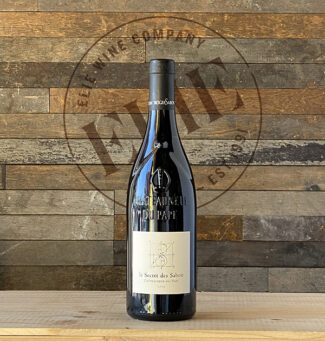 Roger Sabon ‘Le Secret des Sabon’, Châteauneuf-du-Pape 2019 ($216)
Roger Sabon ‘Le Secret des Sabon’, Châteauneuf-du-Pape 2019 ($216)
‘Le Secret des Sabon’ began as an experiment that evolved into of the Sabon’s top bottlings. As befits the enigmatic name, not much technical information is released about the cuvée, but it may presume to arise from very old Grenache with very low yields; only a single demi-muid is produced each year, corresponding to about 160 gallons. The wine shows more refinement than weight, with red fruit dominating mineral and herb accents.
Domaine de la Janasse
Siblings Christophe and Isabelle Sabon have found their Holy Grail in Southern Rhône, using both traditional and modern techniques to craft outstanding wines from value-priced Vins de Pays to their benchmark Châteauneuf-du-Pape. While the brother and sister work the cellar, their father oversees the vineyards, scattered about the appellation in 70 parcels, where terroirs range from sandy soils in the north—Chapouin and La Janasse—to the lightly-colored clay-limestone soils and gravelly red clay and galets of La Crau.
Janasse wines are often described as ‘earthy’, in part the result of cellar technique. The grapes are not entirely destemmed and undergo long, gentle macerations lasting up to a month. Afterward, aging takes place in various vessels, from large concrete tanks to foudres and demi-muids. The barrels are mostly neutral, darkened with age and repeated use.
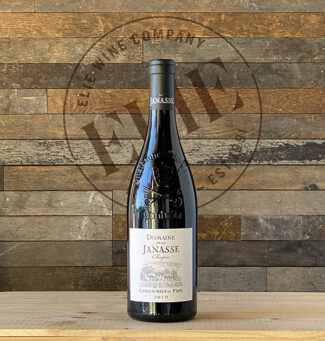 Domaine de la Janasse ‘Chaupin’, Châteauneuf-du-Pape 2019 ($85)
Domaine de la Janasse ‘Chaupin’, Châteauneuf-du-Pape 2019 ($85)
100% old-vine Grenache intended to showcase the purity and energy that these vines are capable of achieving in the sandy soils of Sabon’s lieu-dit ‘Chapouin.’ Since the first bottling in 1990, the cuvée has expanded to include Grenache from the similar terroirs of La Janasse and Le Crau. The wine has a salty cranberry tang lifting the sweet, soft cherry notes, with Provençal garrigue, tea leaves and a long, tannic finish.
Domaine Raymond Usseglio
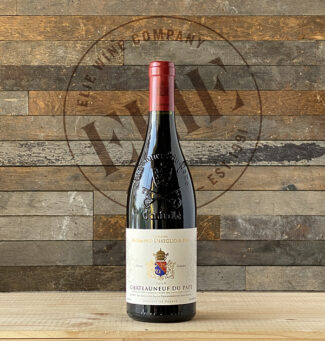 Domaine Raymond Usseglio ‘Impériale Vignes Centenaires’, Châteauneuf-du-Pape 2019 ($82): 95% Grenache from La Crau vines that are more than a century old, the wine shows bright scents of roses, black tea and raspberries while the palate is expansive but silky, delivering an intricate interplay of red fruit, dried spices and orange zest.
Domaine Raymond Usseglio ‘Impériale Vignes Centenaires’, Châteauneuf-du-Pape 2019 ($82): 95% Grenache from La Crau vines that are more than a century old, the wine shows bright scents of roses, black tea and raspberries while the palate is expansive but silky, delivering an intricate interplay of red fruit, dried spices and orange zest.
Domaine de Beaurenard
Domaine de Beaurenard has been a family-affair for eight generations; the current gang includes brothers Daniel & Frédéric Coulon and Daniel’s sons Victor and Antonin. Domaine de Beaurenard has been producing certified biodynamic wines on more than 80 acres of this celebrated terroir since 2010. As Châteauneuf-du-Pape is characterized by the diversity of its soils with a mosaic of vineyards where different varieties grow together, the Coulon family has carefully assembled a ‘collection plot’ of all the allowable CdP grapes; between 1998 and 2005, the best strains of Domaine de Beaurenard’s old vines were carefully selected, and in 2006, the rootstocks were planted. Today, it is a mixed varietal vineyard with the various cultivars interspersed and worked by hand and by horse.
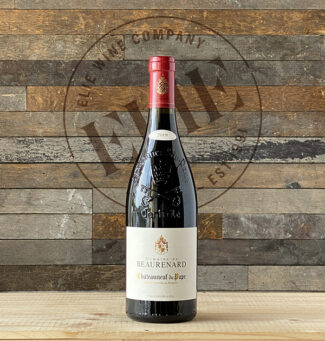 Domaine de Beaurenard, Châteauneuf-du-Pape 2019 ($89)
Domaine de Beaurenard, Châteauneuf-du-Pape 2019 ($89)
65% Grenache, 15% Syrah, 10% Mourvèdre, and the rest a field blend. The domain’s flagship wine is vibrant and fresh with classic notes of black raspberry and black cherry as well as peppery herbs, violets, spring flowers and sous bois.
Château de la Font du Loup
 Château de la Font du Loup, Châteauneuf-du-Pape 2019 ($51)
Château de la Font du Loup, Châteauneuf-du-Pape 2019 ($51)
60% Grenache, 20% Mourvèdre, 15% Syrah, and 5% Cinsault from a lieu-dit named after the estate; La Font du Loup is a high, north-facing plot just east of La Crau. 2019 produced a massive, jammy wine with loads of raspberry and strawberry on the nose and a palate rounded out by herbs—thyme and mint especially—and nicely integrated tannins. Aged one year in oak foudres and three more in cement tanks. 2000 cases produced.
Château de Vaudieu
Dominated by a classic château built in 1767, Vaudieu is not only one of the oldest wineries in Southern Rhône, but it was the first to export its wine to other markets. Once the largest vineyards in the region, by the time the Maffre family purchased it (1955), the estate had been reduced to around 60 acres. A series of renovations and purchases, Gabriel Maffre expanded the holdings to its current 175 acres, planted mostly to red varietals, although all 13 allowable grapes are grown somewhere on the property.
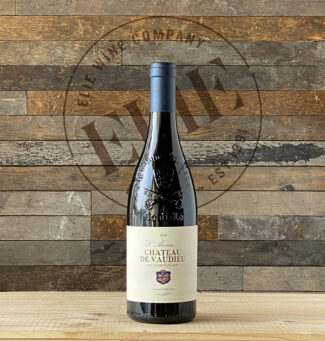 Château de Vaudieu ‘L’Avenue…’, Châteauneuf-du-Pape 2019 ($126)
Château de Vaudieu ‘L’Avenue…’, Châteauneuf-du-Pape 2019 ($126)
100% Grenache from the Vaudieu lieu-dit, where a typical terroir of rocks, clay and sandy soil is ideal for this variety. The wine shows acacia flowers, kirsch, lavender, wild herbs and plums and a racy, expansive finish.
 Château de Vaudieu ‘Val de Dieu’, Châteauneuf-du-Pape 2019 ($89)
Château de Vaudieu ‘Val de Dieu’, Châteauneuf-du-Pape 2019 ($89)
A blend of 60% old-vine Grenache with 25% Syrah and 15% Mourvèdre. The lieu-dit ‘Val de Dieu’ begins near the entrance to the Vaudieu property, where the heavier sandy clay is more drought resistant and best suited to Mourvèdre. It continues up a gentle rise where sandy limestone soils are planted to Syrah before cresting a gentle hill of decomposed sandstone soils that is ideal for Grenache. The wine shows creamy raspberry, boysenberry and blackberry fruit atop a polished structure, while anise, bergamot, fruitcake and cinnamon notes filter through on the finish.
 Château de Vaudieu, Châteauneuf-du-Pape 2019, Magnum ($117)
Château de Vaudieu, Châteauneuf-du-Pape 2019, Magnum ($117)
58% Grenache, 25% Syrah, 11% Mourvèdre and the rest Cinsault; the nose reveals a lively blend of strawberry and fresh cocoa, followed by notes of white pepper. The palate evolves into beautiful concentration of menthol tannins and finishes with notes of graphite.
Domaine Saint Préfert
If a Grenachiste is a loyalist who fights for Grenache, it would be hard to find a High Priestess more qualified than Isabel Ferrando. Her ever-growing expertise and hands-on winemaking produces an outstanding portfolio. The following are her special cuvées.
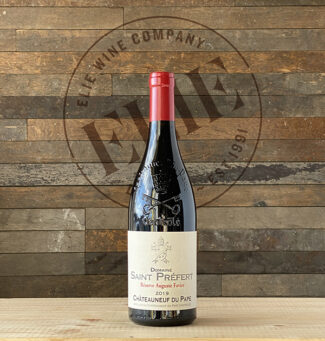 Domaine Saint Préfert ‘Auguste Favier’, Châteauneuf-du-Pape 2019 ($80)
Domaine Saint Préfert ‘Auguste Favier’, Châteauneuf-du-Pape 2019 ($80)
85% Grenache and 15% Cinsault from the Les Serres lieu-dit, the grapes are handpicked and vinified separately; the Grenache is aged in cement and the Cinsault in 600-liter barrels. The power and grace of this wine extends from the core of cassis and cherry purée to light leather, red licorice and violet notes that lead to a silky finish.
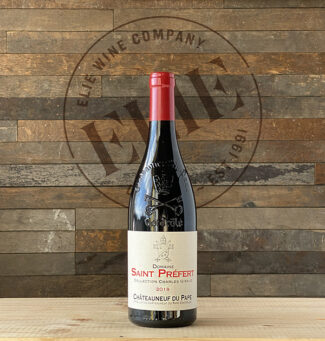 Domaine Saint Préfert ‘Collection Charles Giraud’, Châteauneuf-du-Pape 2019 ($159)
Domaine Saint Préfert ‘Collection Charles Giraud’, Châteauneuf-du-Pape 2019 ($159)
60% Grenache and 40% Mourvèdre; the high percentage of Mourvèdre shows concentrated black raspberry, boysenberry, violet pastille and fruitcake flavors. 2019 will be the last wine under the Domaine Saint-Préfert label; going forward, the wines will be under the Domaine Isabel Ferrando label. In addition, both special cuvées of Reserve Auguste Favier and Collection Charles Giraud will be discontinued in favor of a single Châteauneuf du Pape cuvée (à la Clos des Papes) that will include all the estate terroirs.
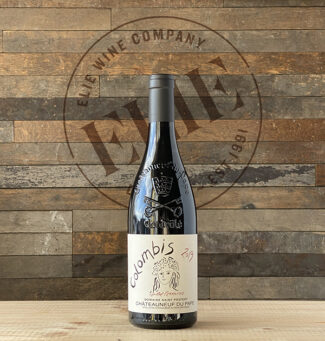 Domaine Saint Préfert Isabel Ferrando ‘Colombis’, Châteauneuf-du-Pape 2019 ($159)
Domaine Saint Préfert Isabel Ferrando ‘Colombis’, Châteauneuf-du-Pape 2019 ($159)
100% old-vine Grenache from the Colombis lieu-dit, located on the western side of the appellation. A classic Grenache bouquet of black raspberries, herbs de Provence, peppery spice and flowery incense.
 Domaine Saint Préfert ‘Cuvée Spéciale Vieilles Clairettes’ Châteauneuf-du-Pape Blanc 2019 ($432) Magnum
Domaine Saint Préfert ‘Cuvée Spéciale Vieilles Clairettes’ Châteauneuf-du-Pape Blanc 2019 ($432) Magnum
The inspiration for this wine came from a 1947 bottle of Henri Bonneau’s Vieilles Clairettes. With advice from Bonneau, a CdP legend, Isabel Ferrando determined that she could make a similar wine from the rare pink Clairette she had co-planted in her vineyards. Bottled only in magnums as a ‘special occasion’ wine, it is 100% Clairette Rose from 80-100-year-old vines in Les Serres lieu-dit. Flavor notes include pink grapefruit, rose water, melon, lemon curd and macadamia nut notes wrapped in a flurry of chamomile, acacia and warm brioche.
- - -
Posted on 2022.05.23 in Châteauneuf-du-Pape, France, Wine-Aid Packages, Southern Rhone | Read more...
Marguet’s Naturally Grown Champagne Channels His Biodynamic & Homeopathic Practices: “A Vitality About The Fruit That Makes It Feel Truly Alive.”
True disciples call it the future of wine, and even the naysayers are beginning to admit that after years of practicing biodynamic, the dividends are irrefutable. And nowhere in Champagne is this more evident than at Champagne Marguet, where Benoît Marguet is one of the few growers in the region to have thrown himself, body and soul, into homeopathy.
It’s easy to think of Champagne as a spiritual substance; after all, it was created by monks and the very airiness of its identity seems celestial. The cornerstone of biodynamics is a view of the vineyard, and its subsequent produce, as a singular organism capable of self-healing and self-propagation. Natural material alone sustains the soil; chemical fertilizers and pesticides are forbidden and range of animals creating a rich, fertile environment for the vines to thrive in. For Benoît Marguet, this goes beyond biodynamics as a concept; it’s a vision of complete harmony in every stage of winemaking and an improvement in his own personal life which translates into his Champagne.

Exploring Pinot Noir Country: The Montagne de Reims
Forming a broad and undulating headland that covers five thousand acres of thicket and vineyard, the Montagne de Reims stretches 30 miles east to west and, north to south, is about five miles wide. The vines hug the limestone slopes of the western and northern flanks and are planted in a huge semicircle that extends from Louvois to Villers-Allerand.
This is Pinot Noir country (except in Trépail and Villers-Marmery, where the Chardonnay can be found). The most northerly of Champagne’s four demarcated regions, the Montagne de Reims is also the most well-known, with more Grand Cru sites than anywhere else in the AOP. Tectonics gave the region mountains of chalk, and the Romans added their two cents by leaving behind huge limestone pits known as Crayers. Within, the humidity remains at around 60% and temperatures at a steady 57°F; perfect cellaring conditions to soften the cold-climate acids of Champagne with time on lees. As a result, Louis Roederer, Ruinart, Veuve Clicquot, Krug, Taittinger and Mumm all store wine here.
Grand Cru Bouzy and Grand Cru Ambonnay: Always Rivals
Like the Hatfields and the McCoys (without rebel flags and shotguns), Bouzy and Ambonnay have a longstanding rivalry built on begrudging respect and competitive moxie. At its closest point, the distance between the two communes is less than a long drive with a golf club, and each have shored up a reputation for superlative wines from the south side of the Montagne de Reims hill.
Yet connoisseurs will happily point out their favorite qualities in each, generally citing the special elegance of wines from Ambonnay, due in part to undulating, south-eastern exposures that moderate the ripening process.
In contrast, Bouzy exposures are almost entirely to the south, ideal for Pinot Noir. More than nine hundred acres in Bouzy are under vine, with 87% of them Pinot Noir, 12% Chardonnay and a scant 0.2% Meunier. The most prominent Champagne houses with a Bouzy presence are Bollinger, Duval-Leroy, Moët & Chandon, Mumm, Pol Roger and Taittinger.
Nearby Ambonnay shares a nearly identical terroir with Bouzy and is similarly appointed, although with slightly less Pinot Noir grown and a bit more Chardonnay—white grapes accounts for about 20% of the vineyards. Like Bouzy, ‘Ambonnay Rouge’ represents a small portion of wine production. Prominent Champagne houses that control Ambonnay vineyards include Duval Leroy, Moët & Chandon, Mumm, Piper Heidsieck, Pol Roger and Roederer.
Champagne Marguet
“We are not human beings having a spiritual experience. We are spiritual beings having a human experience.”
Pierre Teilhard de Chardin
Champagne Marguet has been a bellwether for innovation since 1883, the year that Émile Marguet began to graft his vines onto American rootstocks in the face of the impending invasion of phylloxera. Alas, so ridiculed was the notion throughout Champagne that Marguet wound up tearing out the grafted vines and promptly declared bankruptcy.
Ratchet forward a century and a half: In 2006, Émile Marguet’s distant scion Benoît Marguet joined forces with Hervé Jestin, the former chef de cave of Duval-Leroy, and began to produce a special homeopathic and biodynamic super-cuvée called ‘Sapience’, first released in 2013. Being on the cutting edge of trends has finally paid dividends. Today, Benoît farms 25 acres of vines, all using biodynamic practices. Most are owned by Marguet himself while the rest are leased from relatives. Among them are eight different lieux-dits with an average vine age of 42 years; each is bottled under the name of the plot and reflects the minute soil differences that exist throughout his holdings as well as the massale-select varieties he suits to his various terroirs—among them Les Crayères, Les Bermonts, Le Parc and Les Saints Rémys.

The Horses, The Vines and The Eggs
Two techniques keep Benoît Marguet close to his passion; first, since 2009, he has plowed his acres with a pair of draft horses. He argues that by using this method of cultivation roots are forced deeper towards the water table surface, providing a better water supply. In addition, he treats the soil with preparations made of essential oils, tisanes, nettles, citronella, lavender and rhubarb. “The well-being of the soil is a priority,” he points out. “The horse is in connection with the three elements of terroir, the mineral (chalk), the vegetal (vine and flora) and the animal (fauna and human interaction).”
Next, in the cellar, he continues to adhere to the principles of biodynamics by working the wine according to lunar cycles. Under the conviction that the shape of a vat can affect the quality of the wine, he installed special 40hl egg-shaped wooden cuvée casks produced to his specifications by Tonnellerie Taransaud. The unique shape provides a height/width ratio equal to the Golden Mean or Phi, which Benoît believes is a natural feature repeated throughout the physical world and encourages spiral convection currents and a harmony to better clarify the wine… and his own purpose.
“This symbiosis, with the principle of nature assisting nature, is fascinating research work for me, with influences from various cultures and countries,” Benoît maintains. “In my opinion these fundamental or elemental practices are solutions that instill within our wine its full health benefits, and perhaps even more…”

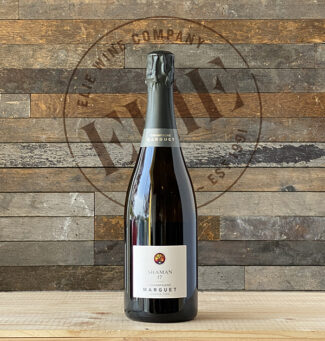 Champagne Marguet ‘Shaman’, Grand Cru 2017 Brut Nature ($58)
Champagne Marguet ‘Shaman’, Grand Cru 2017 Brut Nature ($58)
67% Pinot Noir, 33% Chardonnay, bottled with no dosage and drawn entirely from Grand Cru parcels in Ambonnay in Bouzy. ‘Shaman’ is a suitably cosmic name for Biodynamic Benoît’s NV line-up, but it’s fairly recent: Formerly called ‘Elements’, there was a trademark conflict with California’s Artesa that drove the name change. The base wine comes from the abbreviated 2017 vintage, which saw rainfall in August that caused a hurry-up harvest to prevent botrytis. The nose is ripe with notes of cherry blossom, white peach and spice while the palate is broad and expansive with rich stone fruit and a firm, concentrated mineral core. (Disgorged January 2021, no dosage.)
*click on image for more info
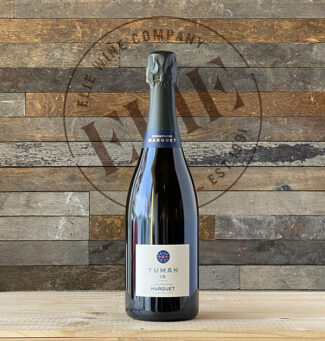 Champagne Marguet ‘Yuman’, Premier Cru Blanc de Blancs 2018 Brut Nature ($58)
Champagne Marguet ‘Yuman’, Premier Cru Blanc de Blancs 2018 Brut Nature ($58)
100% Chardonnay from the Premier Cru village of Vrigny, located in the Petite Montagne de Reims—the northwestern part of the Montagne de Reims. Chardonnay makes this somewhat unusual for Vrigny, which is known primarily for Pinot Meunier, a variety that makes up 71% of the vineyard plantings. Bottled in July 2019, disgorged in February 2021 without dosage, the wine shows a beautifully pure, elegant and intensely mineral profile that is textbook Blanc de Blancs. No dosage.
*click on image for more info
 Champagne Marguet ‘Shaman’, Grand Cru Rosé 2017 Brut Nature ($58)
Champagne Marguet ‘Shaman’, Grand Cru Rosé 2017 Brut Nature ($58)
The base wine is from 2017, complemented by reserve wines from a solera established in 2010. 59% Chardonnay from Ambonnay and 41% Pinot Noir from both Ambonnay and Bouzy; Disgorged November, 2020 and labeled Extra Brut, although with 0g dosage, it is actually Brut Nature. Offers aromas of sweet berries, spices, orange and dried flowers with bright acids, a chalky structure and a pinpoint mousse, concluding with a saline finish. No dosage.
*click on image for more info
 Champagne Marguet ‘Sapience’, Premier Cru 2010 Brut Nature ($220)
Champagne Marguet ‘Sapience’, Premier Cru 2010 Brut Nature ($220)
A blend of 50% Chardonnay, 25% Meunier and 25% Pinot Noir, the wine is a cooperative effort between four top biodynamic growers, Benoît Marguet, Benoît Lahaye, Vincent Laval and David Leclapart: Leclapart provided the Chardonnay, Lahaye the Pinot Noir and Laval the Meunier, while the vinification was done in Marguet’s cellar. The base wine spends two years aging in barrels before the second fermentation in bottle. With the balance and effortlessness of the best grand marques and the depth of terroir of the best grower Champagnes, the wine provides a creamy nose with hints of dried fruit; warm nut-bread flavors on the palate that are in absolute harmony with the wine’s vibrant minerality. (Disgorged January 2020, no dosage.)
*click on image for more info
Coteaux Champenois: Still Champagne
To some, the idea of a still Champagne is like a vegan who eats meat, but the truth is, with global warming infiltrating the world’s vineyards, cold regions like Champagne are increasingly able to produce wonderful wines minus la mousse. Spread across 319 communes, the AOP ‘Coteaux Champenois’ signifies dry, still wine from Champagne; they may be red, white or rosé from virtually the same footprint that produces sparkling Champagne. The majority of Coteaux vineyards are planted in a temperate maritime climate with slight continental influences, particularly in the southeast. Like sparkling Champagne, seven grapes are permitted in the Coteaux. Beside the familiar trio (Chardonnay, Pinot Noir and Pinot Meunier), also allowed are historical varieties Arbane, Petit Meslier and the Pinot derivatives, Pinot Blanc and Pinot Gris.
 Marguet, Coteaux Champenois Grand Cru Ambonnay Blanc 2018, ($100)
Marguet, Coteaux Champenois Grand Cru Ambonnay Blanc 2018, ($100)
100% Chardonnay, 100% Grand Cru from lieux-dits Le Parc and Les Crayères (planted in 1970). The nose is effusively floral with aromas of apple blossom and white peach, echoed on the palate with bee’s-wax and orange, with an intense chalkiness at its core. Aged in oak for 18 months prior to bottling; about 800 bottles made in total.
*click on image for more info
 Marguet, Coteaux Champenois Grand Cru Ambonnay Rouge 2018, ($100)
Marguet, Coteaux Champenois Grand Cru Ambonnay Rouge 2018, ($100)
Pinot Noir requires more hang-time on the vine to fully ripen, and Marguet only produces red Coteaux Champenois in exceptionally warm years; 2018 was one of them. Les Saint Rémys is a parcel of 100% Pinot Noir located on the west side of Ambonnay near the border of Bouzy and produces a lightly-toned red wine with plum, raspberry and sloe on the nose followed by a silky, fruit-driven palate with the tug of stony minerality.
*click on image for more info
 Marguet, Coteaux Champenois Grand Cru Bouzy Rouge 2018, ($100)
Marguet, Coteaux Champenois Grand Cru Bouzy Rouge 2018, ($100)
Thanks to south-facing slopes, Bouzy is one of a few Champagne villages with a strong tradition of red wines. Among the many lieux-dits, Les Loges is a Grand Cru site just below the middle of the slope to the northwest of the village, and this is the vineyard from which Marguet draws his fruit. The wine shows clean dark-cherry and blackberry with a noted spiciness on palate and substantial but ripe tannins. 553 bottles made in total
*click on image for more info
- - -
Posted on 2022.05.22 in France, Champagne | Read more...
The Lord of Beaujolais: Moulin-à-Vent Boasting Structure and Elegance in Nine Wines from Six Outstanding Producers (9-Bottle Pack $317)
Nicknamed ‘The Lord of Beaujolais’ for its aristocratic bouquet and noble structure, Moulin-à-Vent is to the ten crus of Beaujolais what Moulin Rouge is to Parisian cabarets: First among equals. Of course, that equality is a matter of taste—some consumers prefer floral Fleurie and charming Chiroubles to the full-bodied, tannic-structured Moulin-à-Vent and it’s no secret Georges Dubœuf sells a hundred thousand cases of Beaujolais Nouveau each year.
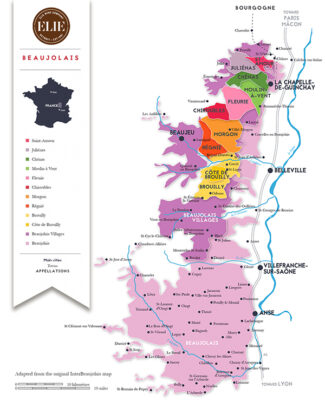
Forgetting the forgettable and concentrating on the myriad styles of Cru Beaujolais, nowhere is the evidence of terroir—the site-specific contributions of geology, sun-exposure and rainfall—more obvious than in Moulin-à-Vent. Although each appellation works with a single grape variety, Gamay, the results range from light, glorified rosé to densely layered, richly concentrated reds that rival their Pinot Noir cousins from Burgundy’s most storied estates.
Moulin-à-Vent is unusual for a number of reasons, and among them is the fact that there is no commune or village from which it takes its name. Like the Moulin Rouge, the appellation is named for the ‘moulin’—windmill—that sits atop the hill that overlooks the south and southeast-facing vineyards. The most peculiar reality of the Cru, however, is that the wine owes its structure and quality to poison: Manganese, which runs in veins throughout the pink granite subsoil, is toxic to grapevines and results in sickly vines that struggle to leaf out and produce small clusters of tiny grapes. It is the concentration of the juice in these grapes that gives Moulin-à-Vent a characteristic intensity unknown in the other crus of Beaujolais, where manganese is not present. It also gives the wine the foundation of phenolic compounds required for age-worthiness; Moulin-à-Vent is among a very select few of Beaujolais wines that can improve for ten, and even twenty years in the bottle ending up with a magnificent cherry-red color – a color that demonstrates the ability of this cru to “pinoter” with age. That French term simply means that they slowly develop a bouquet similar to Pinot Noir, known for its intense ripe fruit notes.

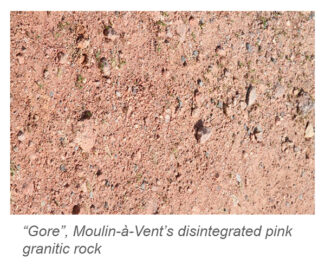
2020 Vintage: Round and Concentrated Juices
As it was everywhere else, Covid was the biggest 2020 story in France, and it affected the fanfare that usually defines Beaujolais’ cherished wine traditions. Like the girl from Ipanema, the weather remained aloof, immune and gorgeous. The season began with a mild, frost-free spring, which developed into a hot summer with few disturbances like hail or disease. Drought nipped at younger vines, but by harvest-time, the majority of grapes were in fine health with rich, ripe flavors resulting in slightly higher in alcohol levels than usual.
2019 Vintage: ‘Solar’ Vintages Continue
After damaging frosts in the early spring, 2019 offered Beaujolais one of the sunniest seasons on record, but along with the blue skies came the sort of oppressive heat generally linked to climate change. With temperatures exceeding 100°F throughout the region, drought set in and it was not until some welcome rain fell in August that the vintage found hope. Accompanying the rain were a few violent hailstorms, further reducing yields and necessitating vigorous sorting at the winery. Estates that were up to the task produced richly concentrated wines with balanced acidity which drink beautifully now, but may stand up to additional time in the cellar.
2018 Vintage: Rich with Breath of Freshness
As in much of Burgundy, 2018 was glorious throughout Beaujolais; the best harvest since 2015—bountiful and balanced. Both the winter and spring were extremely wet, but far from affecting the harvest, they topped-up water reserves in the soils to ensure the vines didn’t succumb entirely to drought when the hot summer struck. As is the case in prolonged dry conditions, older and more established vines fared better. In general, 2018 Beaujolais is rich, spicy and concentrated with great texture and bracing acidity. The majority of the wines are ready to drink, but the top estates might benefit from an additional year or two of aging.
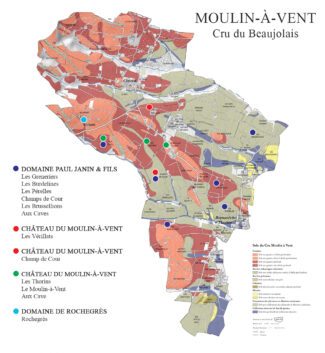
Domaine Paul Janin & Fils
Says Éric Janin: “I represent the fourth generation of a domain established in the county of Saône-et-Loire at Romanèche-Thorins. Romanèche-Thorins soil is comprised of manganese, a type of rock once called ‘glassmaker’s soap’ because it served to whiten glass used by pottery makers. Within the word ‘domain’, we find ‘main’, meaning ‘hand’ in French. The hand symbolizes work, dexterity and identity. It also gives care, contact and sharing, accompanied by a mind constantly in motion. Jean-Claude, Marcel, Paul and myself: Craftsmen from the outset. Our hands are the raw material of our winegrowing profession, just as grapes are the raw material of wine. At our domain, these two materials have been in contact unceasingly; they remind us of the past, anchor us to the reality of the present and launch us towards the future.”
The family of Paul Janin, originally coopers, has tended Gamay vines since 1917. Paul’s grandfather wanted a closer connection between the vine and consumers, and in 1952, he began to bottle his own wine. In 1967, Paul’s father bought a plot of grapes in the lieu-dit Les Greneriers; today, those vines are a hundred years old. Paul took over in 2008, and while his youngest daughter Perrine completes her studies in viticulture and oenology, his son Eric, a fourth-generation grower, now oversees the fruit from its inception in the vineyard to its final resting place in the bottle. The grapes are farmed using lutte raisonnée methods, and the flaky, pink granite soil produces structured, powerful wines that gain even more character as they age.
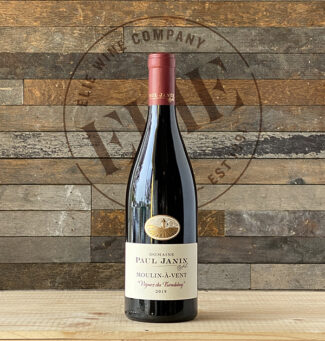 Domaine Paul Janin & Fils ‘Vignes du Tremblay’, 2019 Moulin-à-Vent ($29)
Domaine Paul Janin & Fils ‘Vignes du Tremblay’, 2019 Moulin-à-Vent ($29)
Modern-day Le Tremblay is a blend from several lieux-dits; Les Greneriers, Les Burdelines, Les Pérelles, Champs de Cour, Les Brussellions and Aux Caves. The vines, between 40 and 70 years old, are pruned traditionally in the low-trained Gobelet style. Wine from each plot is matured in separate vats for a period of 18 months on fine lees, allowing for micro-oxygenation and then blended just prior to bottling.
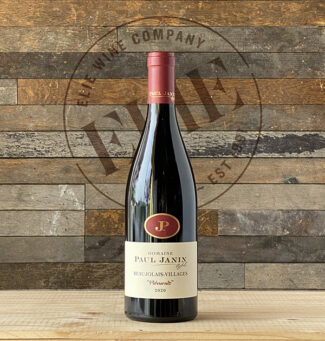 Domaine Paul Janin & Fils ‘Piémonts’, 2020 Beaujolais-Villages ($24)
Domaine Paul Janin & Fils ‘Piémonts’, 2020 Beaujolais-Villages ($24)
‘Piémonts’ is a blend of wines from old vines in two named plots, Les Jumeaux and Les Peloux. Vines are 30 to 60 years old grown in Piedmont soils and ancient alluvium. The bouquet shows hints of blueberry, mulberry and plum; tannins are firm, the balance between richness and acidity on point and the finish long.
Château du Moulin-à-Vent
Château du Moulin-à-Vent has a history as unique and fascinating as the wine. In the late 1700s, Philiberte Pommier discovered that certain plots on her estate yielded better wines than others, and set out to understand the geology that underscored a self-evident truth. She began to tailor her winemaking to individual lieux-dits in her property (then called Château des Thorins), and in 1862, Pommier’s wines were deemed the best in the Mâcon region at the Universal Exhibition of London. At the time, Philiberte Pommier was 99 years old.
Today, the estate encompasses nearly a hundred acres and covers some of the appellation’s finest climats—Les Vérillats, Le Champ de Cour, La Rochelle—with an average vine age of over forty years. The pink granite soil is rich in iron oxide, copper and manganese, and since 2009, under the new ownership of the Parinet family, investment in the winemaking facilities and the vineyards has resulted in plot-specific signature wines.
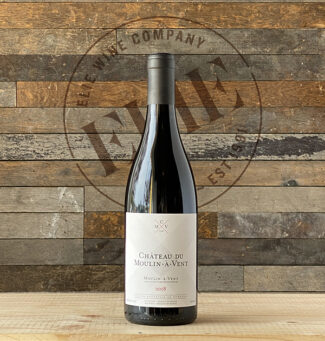 Château du Moulin-à-Vent, 2018 Moulin-à-Vent ($39)
Château du Moulin-à-Vent, 2018 Moulin-à-Vent ($39)
Three unique terroirs on the estate are blended to create this luscious flagship wine: ‘Les Thorins’ is an iconic south-facing plot, ‘Le Moulin-à-Vent’ looks eastward and ‘Aux Cave’ is rich in silica with 80-year-old vines. The wine is deep red color with purple tints and lovely aromas of wild berries, hints of cardamom and flowers; notably rose, peony and violates with spice reasserting itself on the finish.
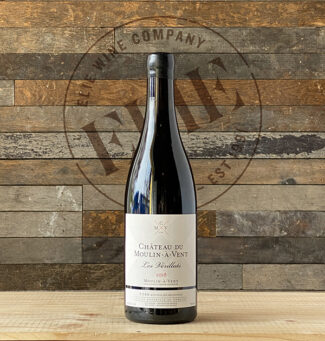 Château du Moulin-à-Vent, 2018 Moulin-à-Vent ‘Les Vérillats’ ($49)
Château du Moulin-à-Vent, 2018 Moulin-à-Vent ‘Les Vérillats’ ($49)
Les Vérillats is one of the earliest delineated terroirs of Moulin-à-Vent. Located above the windmill, the ten acres of 65-year-old vines enjoy an easterly exposure with a panoramic view of the vineyards. The granite soil is exceptionally sandy (atypical for a great terroir of this appellation), nearly two feet deep and well-drained. It is layered over pink granite bedrock rich in iron oxide, copper and manganese; the vineyard lies in the corridor of drying winds that exert a profoundly positive effect on the maturation and concentration of the grapes. The wine is spice-accented with dark berry notes complex with suggestions of musky earth, mocha and violet. Expansive on the palate, it finishes long and chewy with a slow-build of dusty tannins.
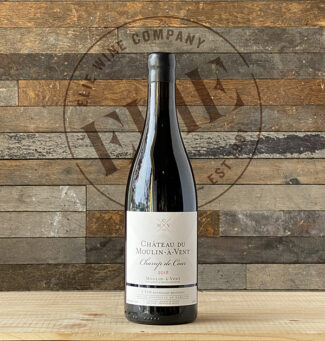 Château du Moulin-à-Vent, 2018 Moulin-à-Vent ‘Champ de Cour’ ($53)
Château du Moulin-à-Vent, 2018 Moulin-à-Vent ‘Champ de Cour’ ($53)
‘Champ de Cour’ is an 8-acre lieu-dit found on a slight slope between the windmill and Fleurie, with an eastern exposure that shelters it from the wind. Granitic surface rocks force the roots to dig deeply and, in the process, benefit from five distinct minerals that give the wine a unique character. The top soil is deep and heavier than in the rest of the appellation, retaining more water. The wine shows an explosive nose with roasted and spicy (pepper and saffron) notes. A full-bodied wine of considerable elegance, lively tannins and superb length with a distinctly mineral finish.
Domaine de Roche-Guillon
With five generations working the same hillside, a certain metaphysical pas de deux takes place between terroir and wine grower. Add a third party (Bruno Copéret’s wife Valérie) and Domaine de Roche-Guillon is ready for the challenges of marketing and climate change that lie ahead. The Copéret vineyards spread over 22 rolling acres of granite-based soil; they enjoy a south facing exposure, which—combined with altitude of over 1100 feet—ensure the vines yield grapes with considerable ripeness.
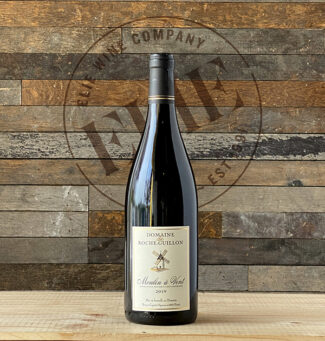 Domaine de Roche-Guillon, 2020 Moulin-à-Vent ($22)
Domaine de Roche-Guillon, 2020 Moulin-à-Vent ($22)
The plots to elaborate this wine are located between the Vauxrenard commune and Émeringes, expressing the granitic soils of Vauxrenard and the sandy-clay of Émeringes. Half the selected grapes were fermented in whole bunches and half were destemmed before spending twelve days macerating at 84° F. With a floral potpourri on the nose and maraschino cherry and wild blackberry on the palate, the wine demonstrates typical muscularity of Moulin-à-Vent with gripping tannins, concentration and energy.
Domaine Thibault Liger-Belair
Winemaking has been the legacy of Liger-Belair family for a quarter of a millennium. Prior to establishing his own domain, Thibault Liger-Belair studied oenology, worked for a communications firm in Paris and started an internet company to discover and sell high quality wines. Still, the vines beckoned, and in 2001, at the age of 26, he returned to them. The following year saw his first harvest of Nuits-Saint-Georges, and in 2003, he expanded into Richebourg Grand Cru, Clos Vougeot Grand Cru and Vosne-Romanée Premier Cru Petits Monts. In 2009, he ranged farther afield, into Beaujolais, and now produces Beaujolais-Villages and several Moulin-à-Vent wines.
The soil in his Moulin-à-Vent property is shallow (less than 20 inches deep) and composed primarily of granitic sand and quartz, and about half the vines of the 35 acres were planted between 1910 and 1955. His signature wine, for this reason, is ‘Les Vieilles Vignes’—the ‘old vines.’
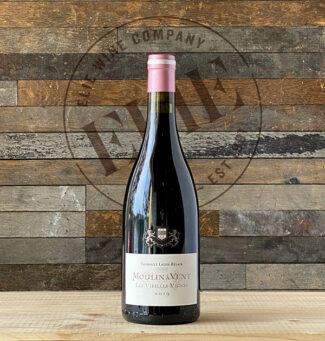 Domaine Thibault Liger-Belair ‘Vieilles Vignes’, 2019 Moulin-à-Vent ($48)
Domaine Thibault Liger-Belair ‘Vieilles Vignes’, 2019 Moulin-à-Vent ($48)
A cuvée blending nine old vine parcels of old vines located in a belt around the Moulin-à-Vent hill. The wine offers exotic aromas of spiced candied cherries with a rustic undertow of damp earth; bright, acidic with a firm tannic structure and long, sweet finish.
Domaine de Rochegrès
Albert Bichot owns six domains in the heart of five great vinicultural regions; each estate cultivates its own land using sustainable practices and employs a dedicated winemaking team devoted to that domain alone. Bichot’s 13 acres within the 1631-acre Moulin-à-Vent appellation are located at the heart of one of the 18 recognized single vineyards, Rochegrès, meaning ‘grey rock’ As the name suggests, the granitic parent rock is visible at the surface of the soil in the vineyards. These vines benefit from mainly south-eastern exposure and thrive in very pure, lean pink granitic soil, forcing them to plunge their roots deep in search of the nutrients they need.
 Domaine de Rochegrès, 2019 Moulin-à-Vent ($27)
Domaine de Rochegrès, 2019 Moulin-à-Vent ($27)
A beautifully concentrated wine with an expressive mineral base; the nose evokes cherry compote and tart plums, then evolves into floral and spicy notes, finishing with a touch of oak.
Domaine Diochon
Domaine Diochon is so close to the iconic windmill that the leaves of the vines are stirred by the breeze it creates. Nearly as famous as the mill is the heavy, curling Teddy-Roosevelt-mustache of the proprietor, Bernard Diochon, who took over the estate from his father in 1967. In waxing philosophically about his terroir, he references ‘crumbly granite soil that allows the vines to plunge easily towards gore subsoil, which feeds the vines, while adding a pronounced mineral component to the wine.’ For the geologically challenged, ‘gore’ is an accumulated mass of sand and thin clay deposits with weathered feldspars, mica, and quartz.
Creating wine from vines between forty and a hundred years old, Diochon is a fan of the specific qualities of the tannins in wines from Moulin-à-Vent, which are unique to the appellation. “I like tannic wines without heaviness; with fruit and floral aromas. I don’t like weighty wines with hard tannins. My favorite wines are St Émilion from Bordeaux, and Chambolle-Musigny and Nuits-St-Georges from Burgundy. Every vigneron naturally chooses to make wines in the style they prefer.”
In this, he is as good as his word, having established the benchmarks of his house style: Harvesting only when the grapes are perfectly mature, using (of course) traditional whole cluster fermentation, aging in large old oak foudres and bottling unfiltered in the springtime.
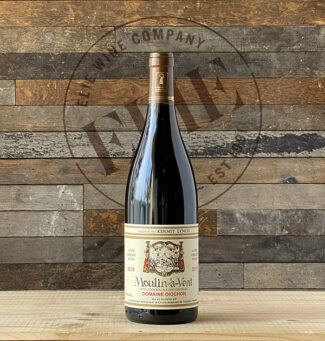 Domaine Diochon ‘Vieilles Vignes’, 2019 Moulin-à-Vent ($26)
Domaine Diochon ‘Vieilles Vignes’, 2019 Moulin-à-Vent ($26)
Domaine Diochon is an outlier in Beaujolais; it produces only one bottling each year: Old-vine Moulin-à-Vent. Crafted from vines planted in 1920, 1950 and the 1960s, it remains a benchmark of the Diochon style, defined by well-integrated tannins without heaviness and lifted by fragrant fruit and floral aromas. Soulful and savory with notes of cherries, iron and smoke.
- - -
Posted on 2022.05.13 in Moulin-à-Vent, France, Beaujolais, Wine-Aid Packages | Read more...
Featured Wines
- Notebook: A’Boudt Town
- Saturday Sips Wines
- Saturday Sips Review Club
- The Champagne Society
- Wine-Aid Packages
Wine Regions
Grape Varieties
Aglianico, Albarino, Albarín Tinto, Alicante Bouschet, Aligote, Altesse, Arbanne, Arcos, Auxerrois, Barbarossa, Beaune, Biancu Gentile, Bonarda, bourboulenc, Cabernet Sauvignon, Calvi, Carcajolu-Neru, Chenin Blanc, Cinsault, Clairette, Cortese, Corvinone, Cot, Counoise, Dolcetto, Erbamat, Fiano, folle Blanche, Fumin, Gamay, Garganega, Garnacha Tintorera, Godello, Graciano, Grenache, Grenache Blanc, Grolleau, Groppello, Jacquère, Juan Garcia, Lladoner Pelut, Macabeo, Maconnais, Malbec, Malvasia, manseng, Marcelan, Marsanne, Marselan, Marzemino, Melon de Bourgogne, Mencía, Merlot, Montepulciano, Montònega, Moscatell, Mourv, Mourvèdre, Muscadelle, Muscat, Natural, Nebbiolo, Nero d'Avola, Niellucciu, Palomino, Parellada, Patrimonio, Pecorino, Pedro Ximénez, Persan, Petit Meslier, Pineau d'Aunis, Pinot Auxerrois, Pinot Blanc, Pinot Gris, Pinot Meunier, Pinot Noir, Pouilly Fuisse, Pouilly Loche, Riesling, Rousanne, Sagrantino, Sangiovese, Sauvignon, Sciacarellu, Semillon, Serine, Sumoll, Tempranillo, Teroldego, Timorasso, Trebbiano Valtenesi, Treixadura, trepat, Trousseau, Ugni Blanc, Vermentino, Viognier, Viura, Xarel-loWines & Events by Date
- September 2025
- August 2025
- July 2025
- June 2025
- May 2025
- April 2025
- March 2025
- February 2025
- January 2025
- December 2024
- November 2024
- October 2024
- September 2024
- August 2024
- July 2024
- June 2024
- May 2024
- April 2024
- March 2024
- February 2024
- January 2024
- December 2023
- November 2023
- October 2023
- September 2023
- August 2023
- July 2023
- June 2023
- May 2023
- April 2023
- March 2023
- February 2023
- January 2023
- December 2022
- November 2022
- October 2022
- September 2022
- August 2022
- July 2022
- June 2022
- May 2022
- April 2022
- March 2022
- February 2022
- January 2022
- December 2021
- November 2021
- October 2021
- September 2021
- August 2021
- July 2021
- June 2021
- May 2021
- April 2021
- March 2021
- February 2021
- January 2021
- December 2020
- November 2020
- October 2020
- September 2020
- August 2020
- July 2020
- June 2020
- May 2020
- April 2020
- March 2020
- February 2020
- January 2020
- December 2019
- November 2019
- October 2019
- September 2019
- August 2019
- July 2019
- June 2019
- May 2019
- April 2019
- March 2019
- February 2019
- January 2019
- December 2018
- November 2018
- October 2018
- September 2018
- August 2018
- July 2018
- June 2018
- May 2018
- April 2018
- March 2018
- February 2018
- January 2018
- December 2017
- November 2017
- October 2017
- September 2017
- August 2017
- July 2017
- June 2017
- May 2017
- April 2017
- March 2017
- February 2017
- January 2017
- December 2016
- November 2016
- October 2016
- September 2016
- August 2016
- July 2016
- June 2016
- May 2016
- April 2016
- March 2016
- February 2016
- January 2016
- December 2015
- November 2015
- October 2015
- September 2015
- August 2015
- July 2015
- June 2015
- May 2015
- April 2015
- March 2015
- February 2015
- January 2015
- December 2014
- November 2014
- October 2014
- September 2014
- August 2014
- July 2014
- June 2014
- April 2014
- March 2014
- February 2014
- January 2014
- December 2013
- November 2013
- October 2013
- September 2013
- August 2013
- July 2013
- June 2013
- May 2013
- April 2013
- March 2013
- February 2013
- January 2013
- December 2012
- November 2012
- October 2012

